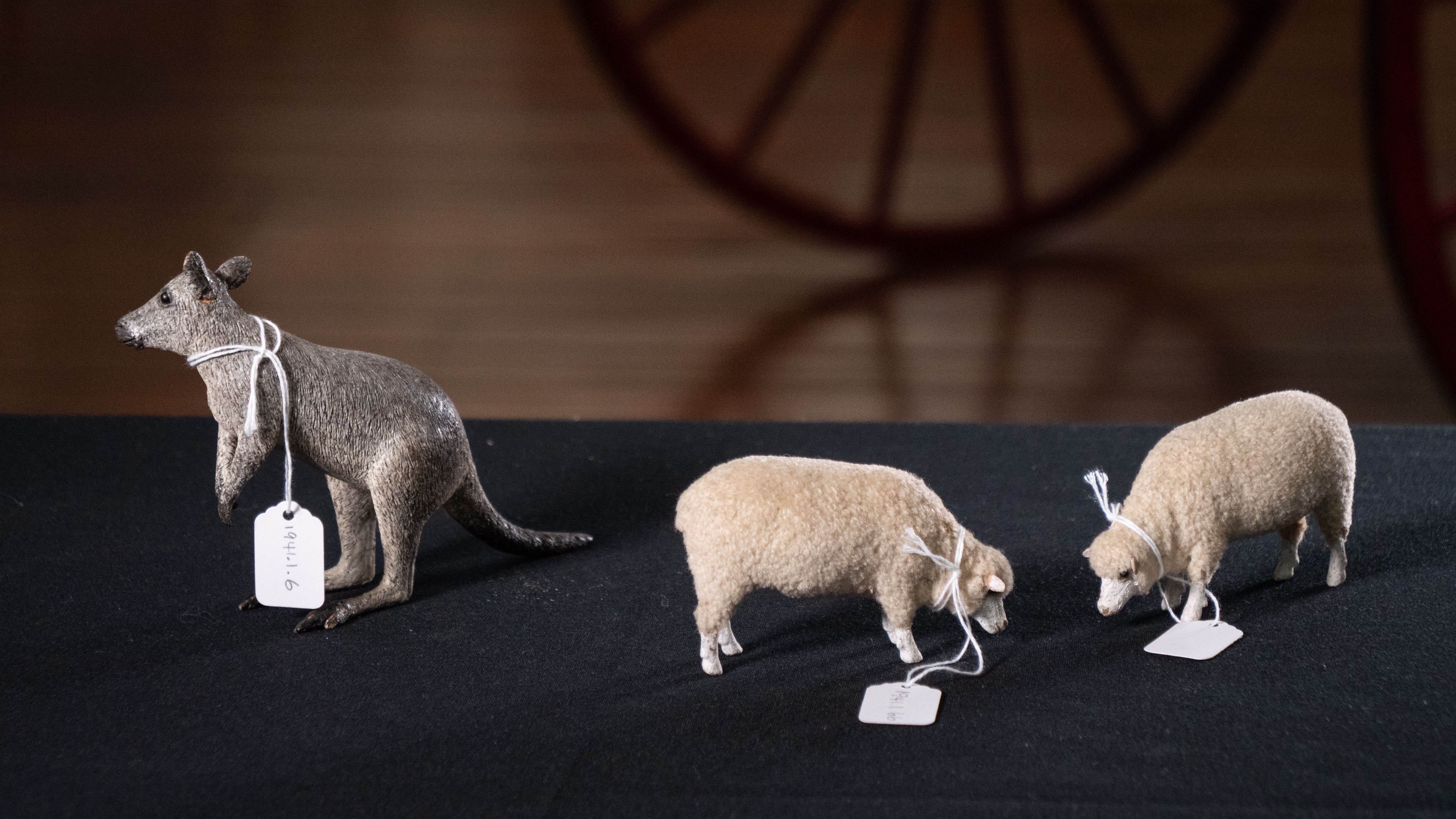Tales of the unexpected
Armidale's Folk Museum discovered some curious items in storage.
University of New England experts came in to help out – and made some surprising discoveries.
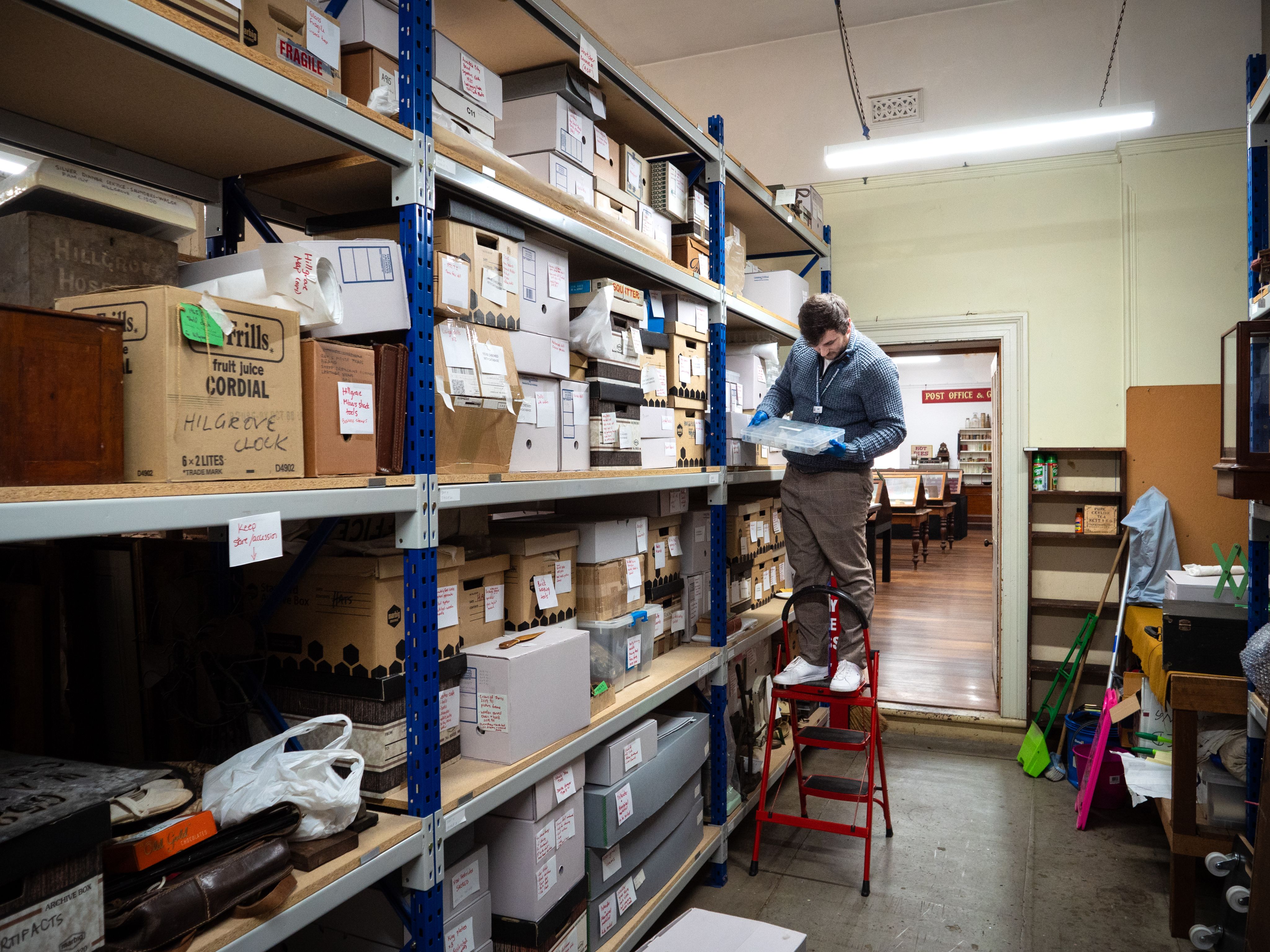
Armidale's 90-year-old Folk Museum is dedicated to conserving objects that tell stories of the region's 'folk' – its people.
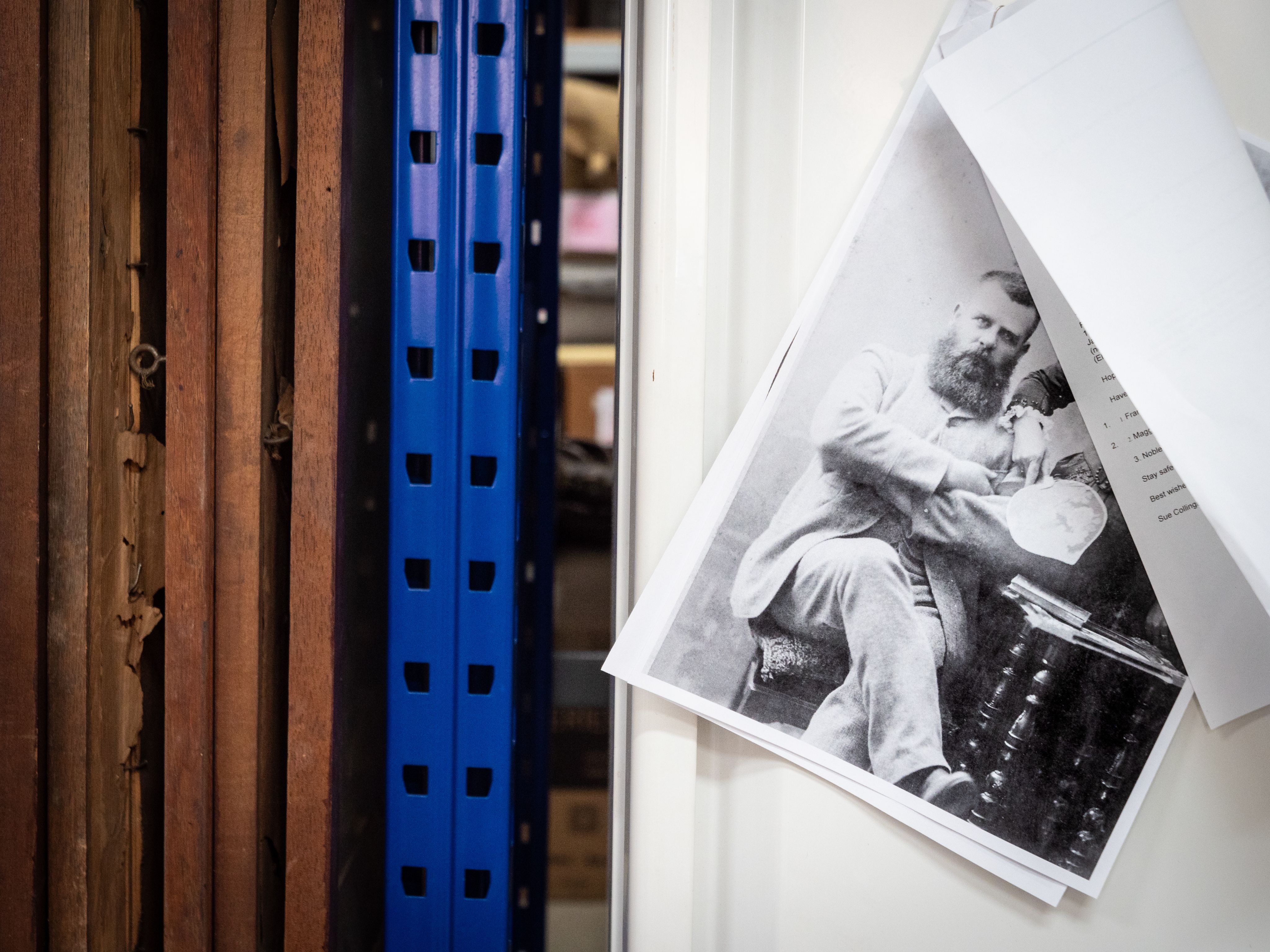
Over the years, items have been donated to the Museum that have no local story – or any known story at all.
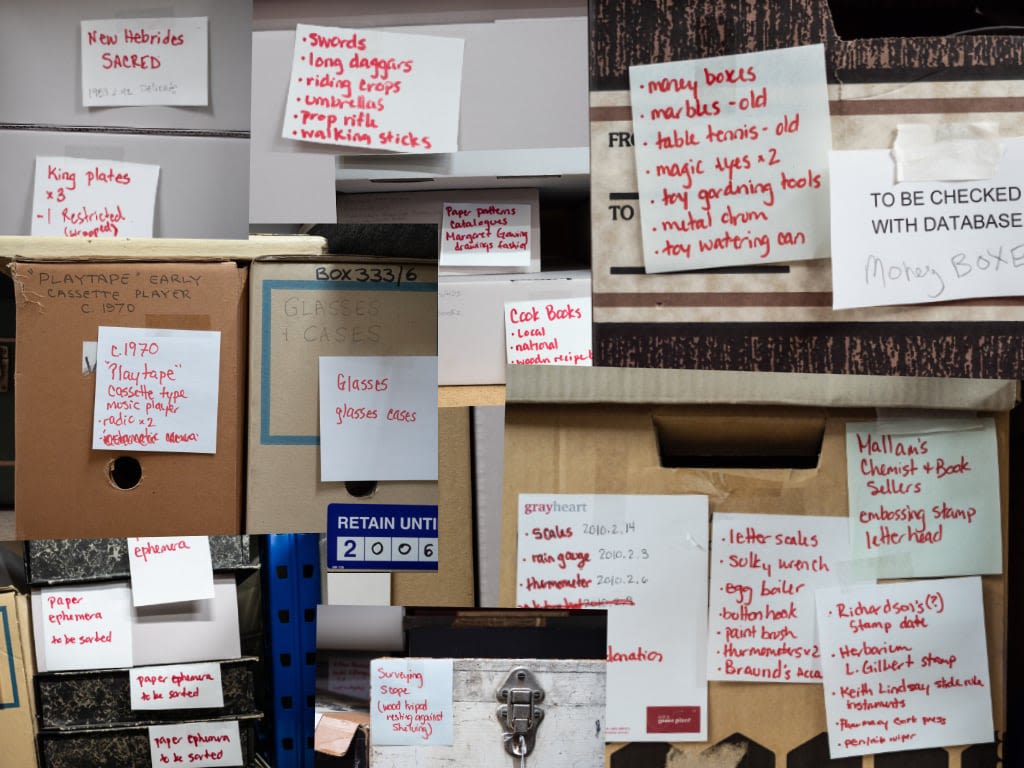
Folk Museum Curator, Sarah Reddington, asked experts at the University of New England for help in identifying these uncatalogued artefacts.
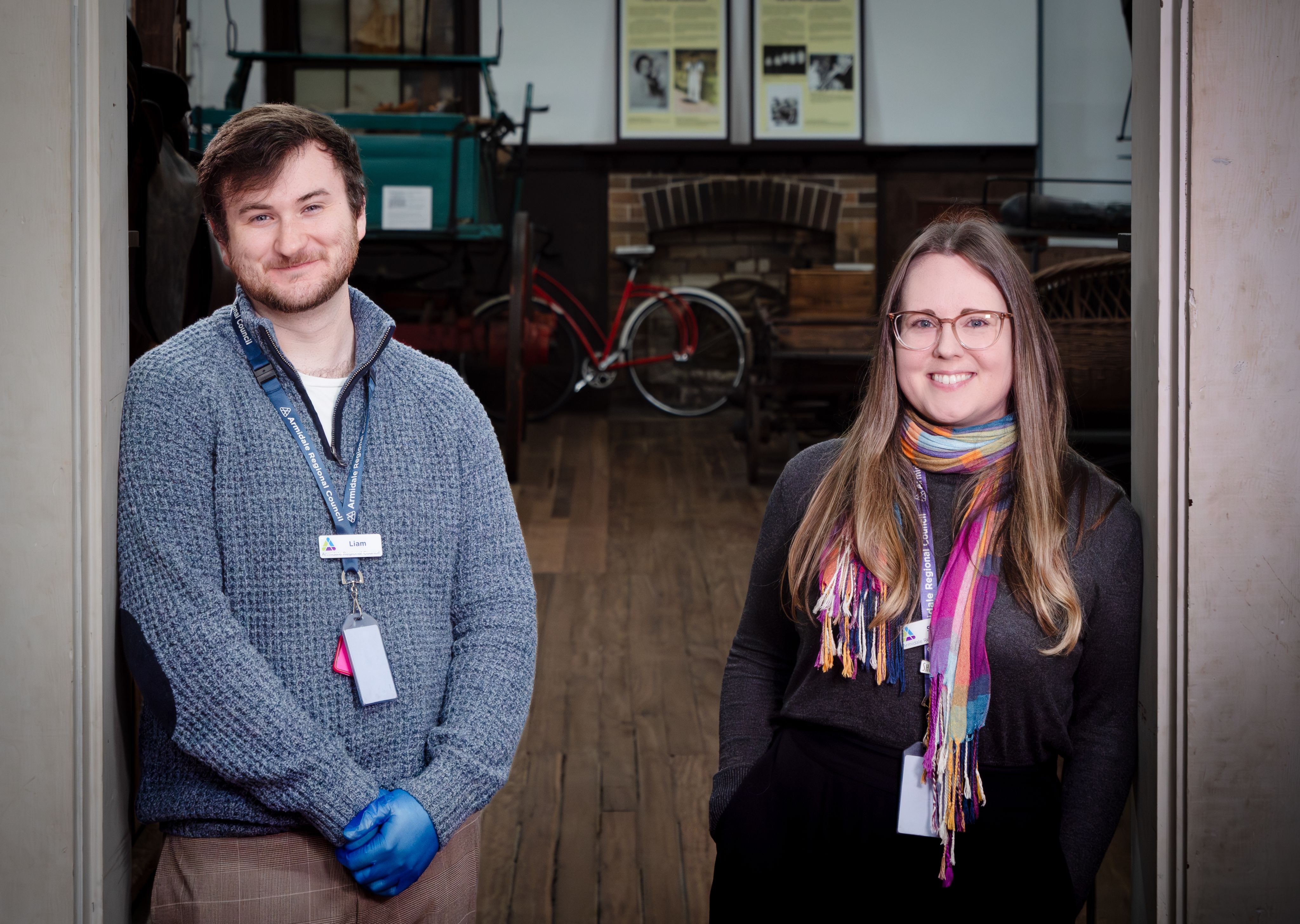
They found a few surprises.
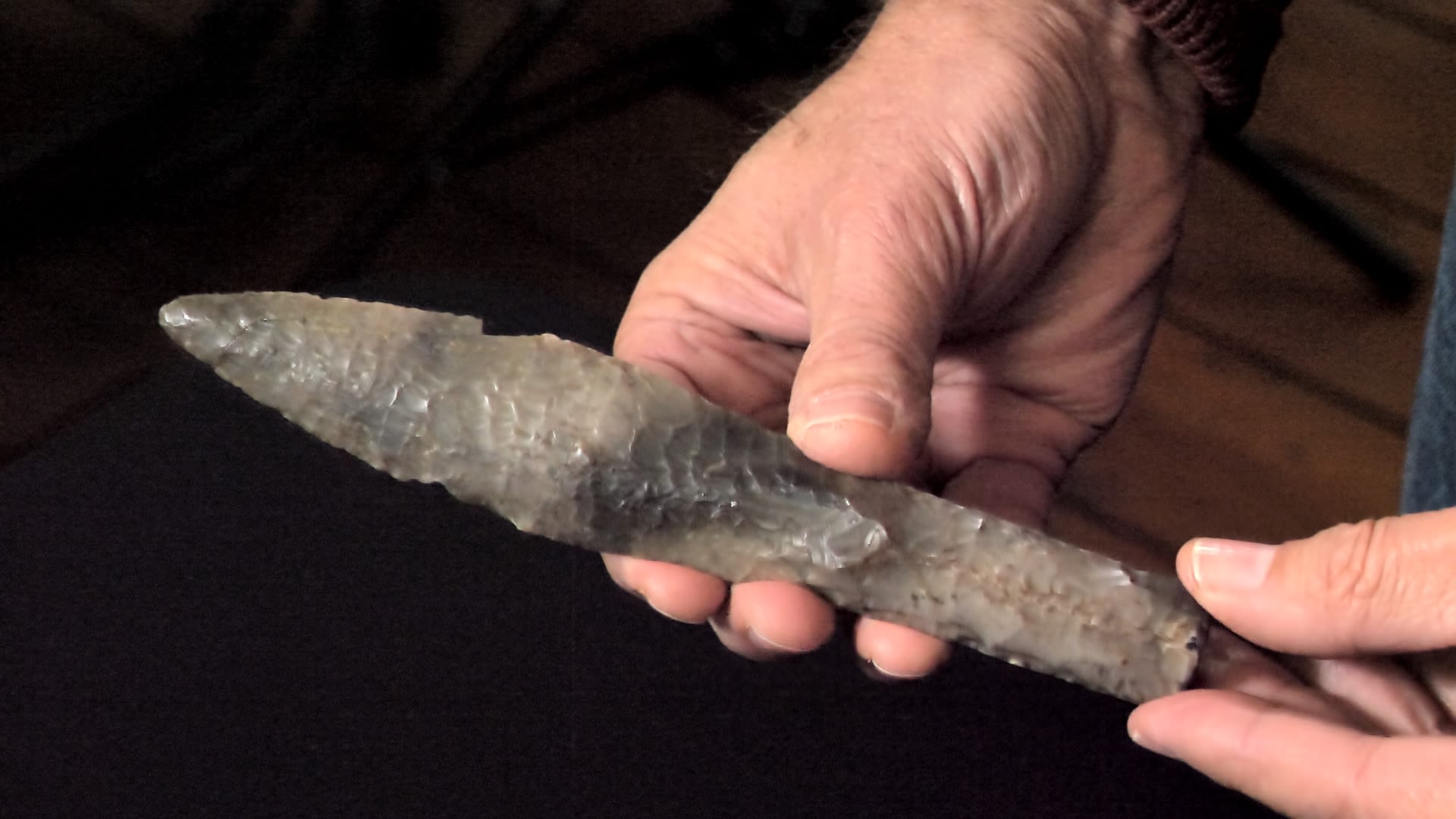
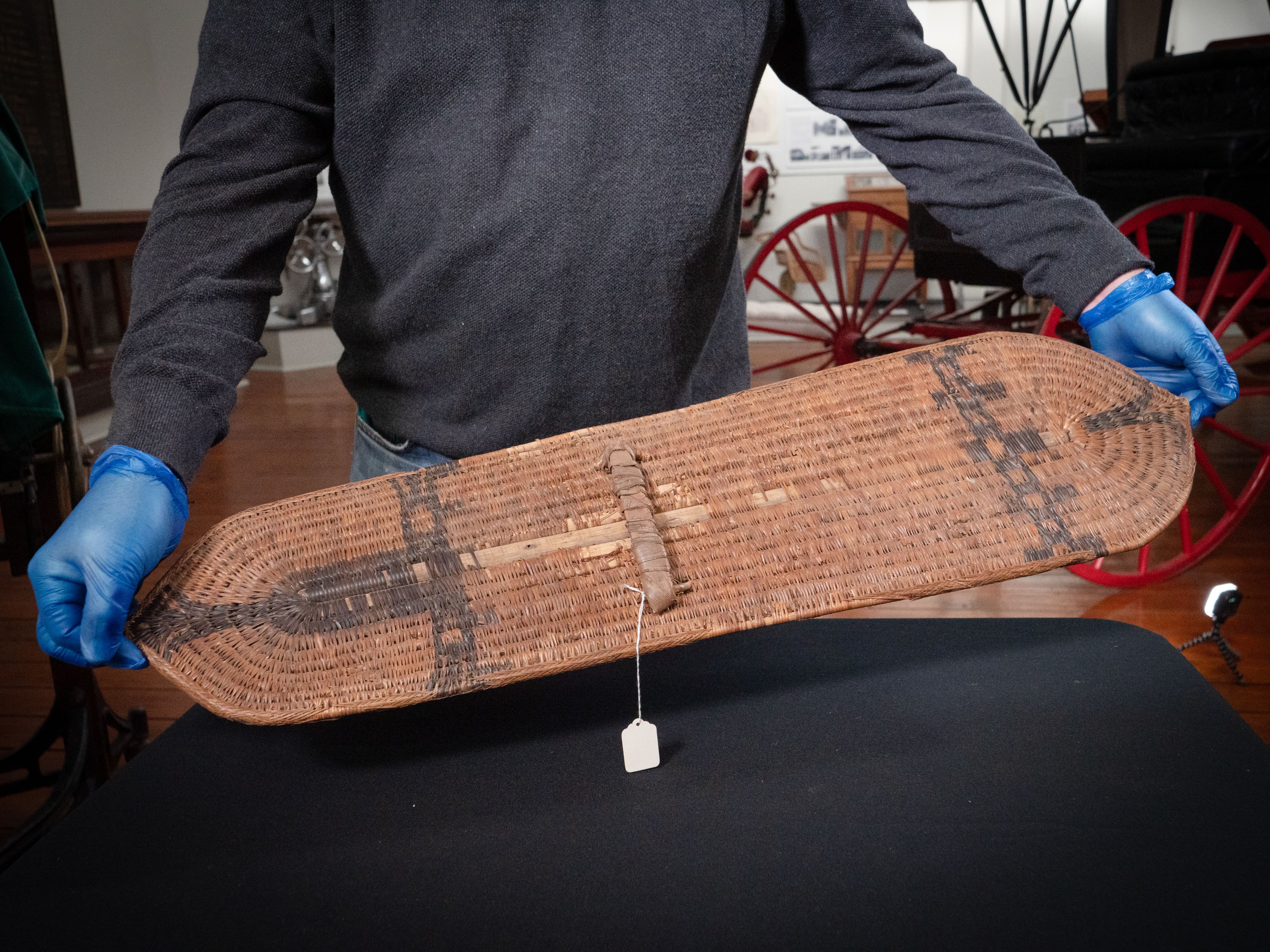
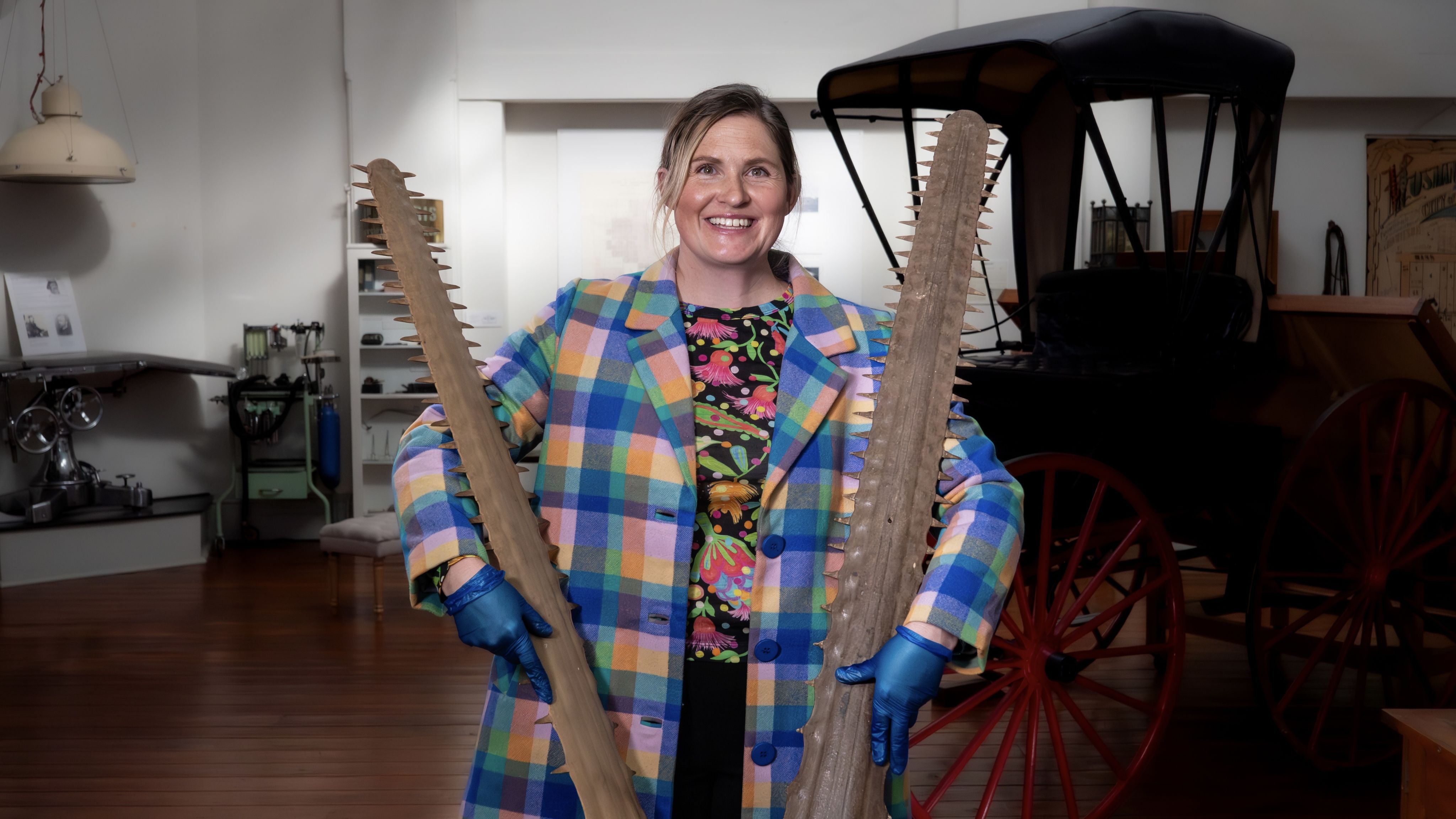
Professor Mark Moore identified a 4000 year old stone dagger from Denmark.
Professor Martin Gibbs identified a trove of around 100 artefacts collected from the Pacific Islands in the late 19th Century, many rare, including a woven shield in magnificent condition.
Dr Heidi Kolkert found two sawfish snouts collected in the 1930s from species that are now on the IUCN "Red List" of critically endangered animals.
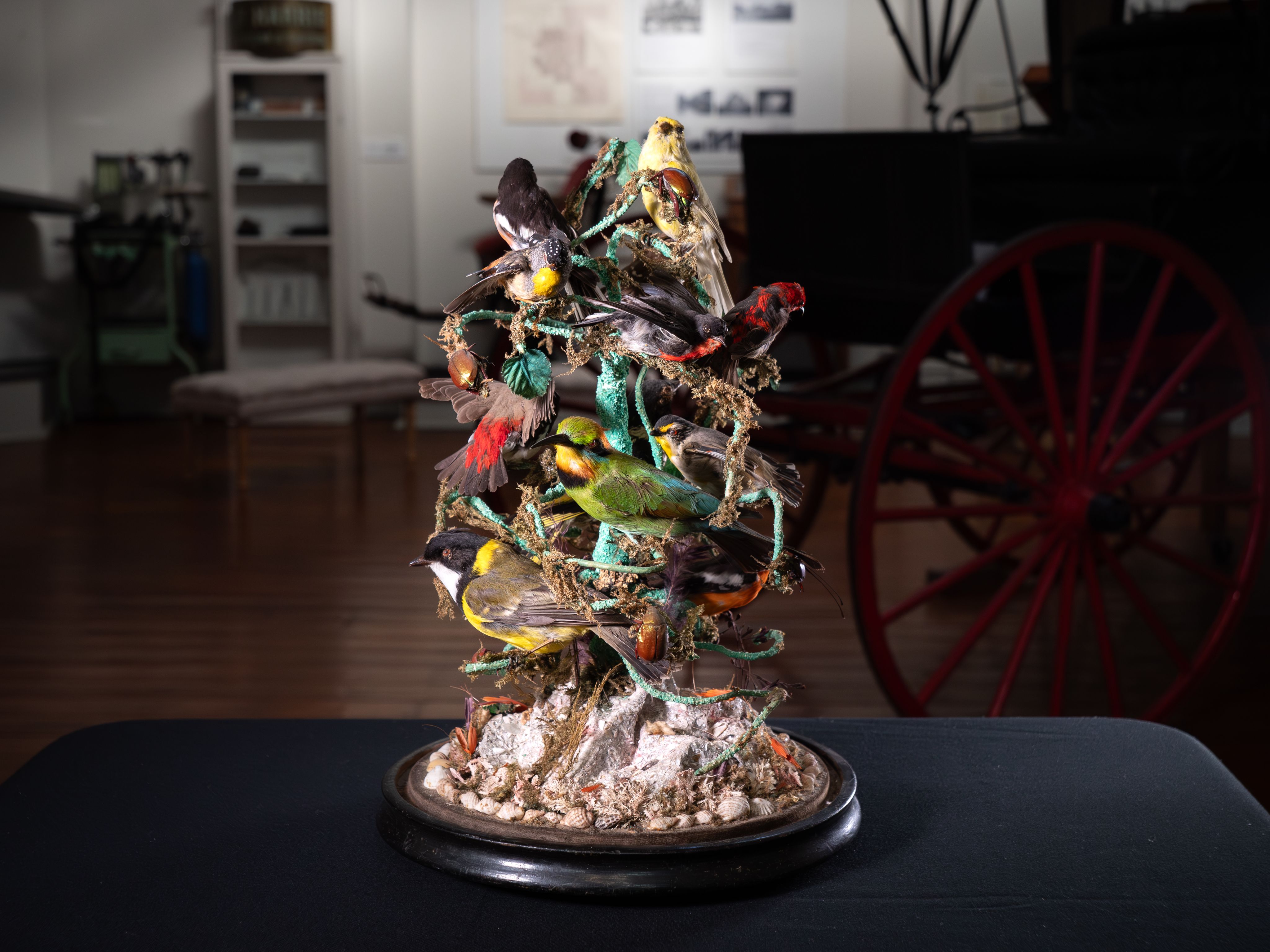
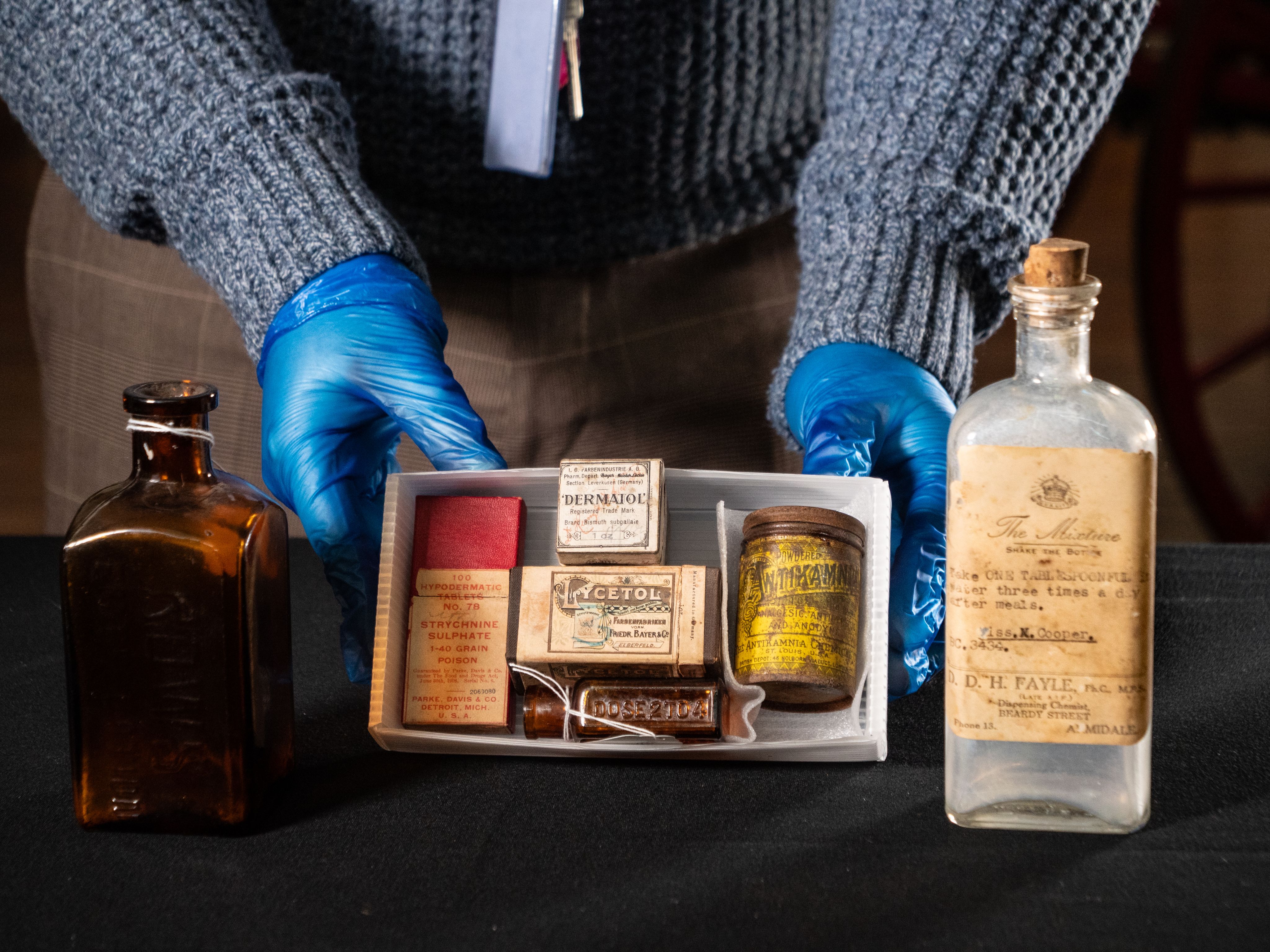
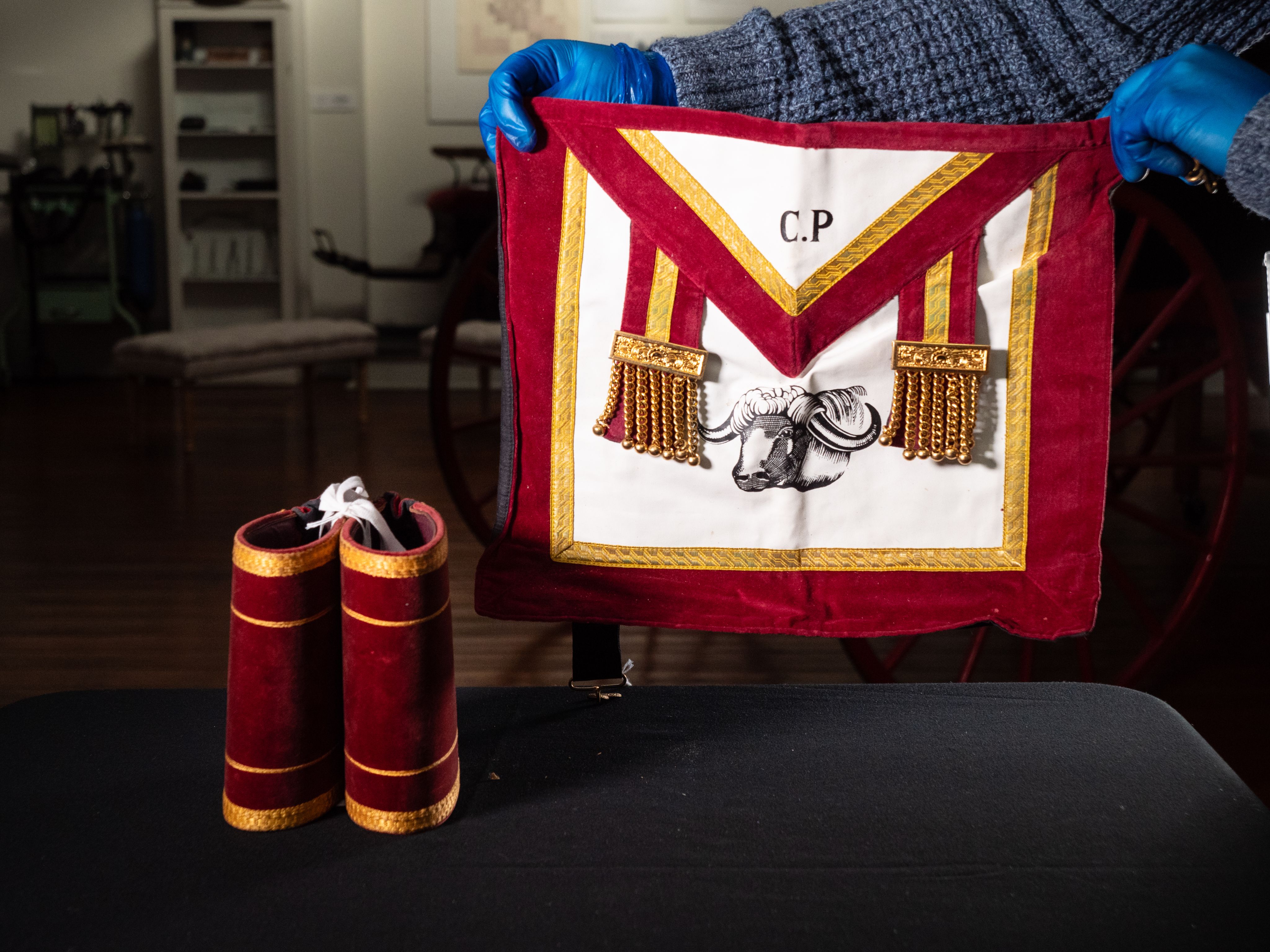
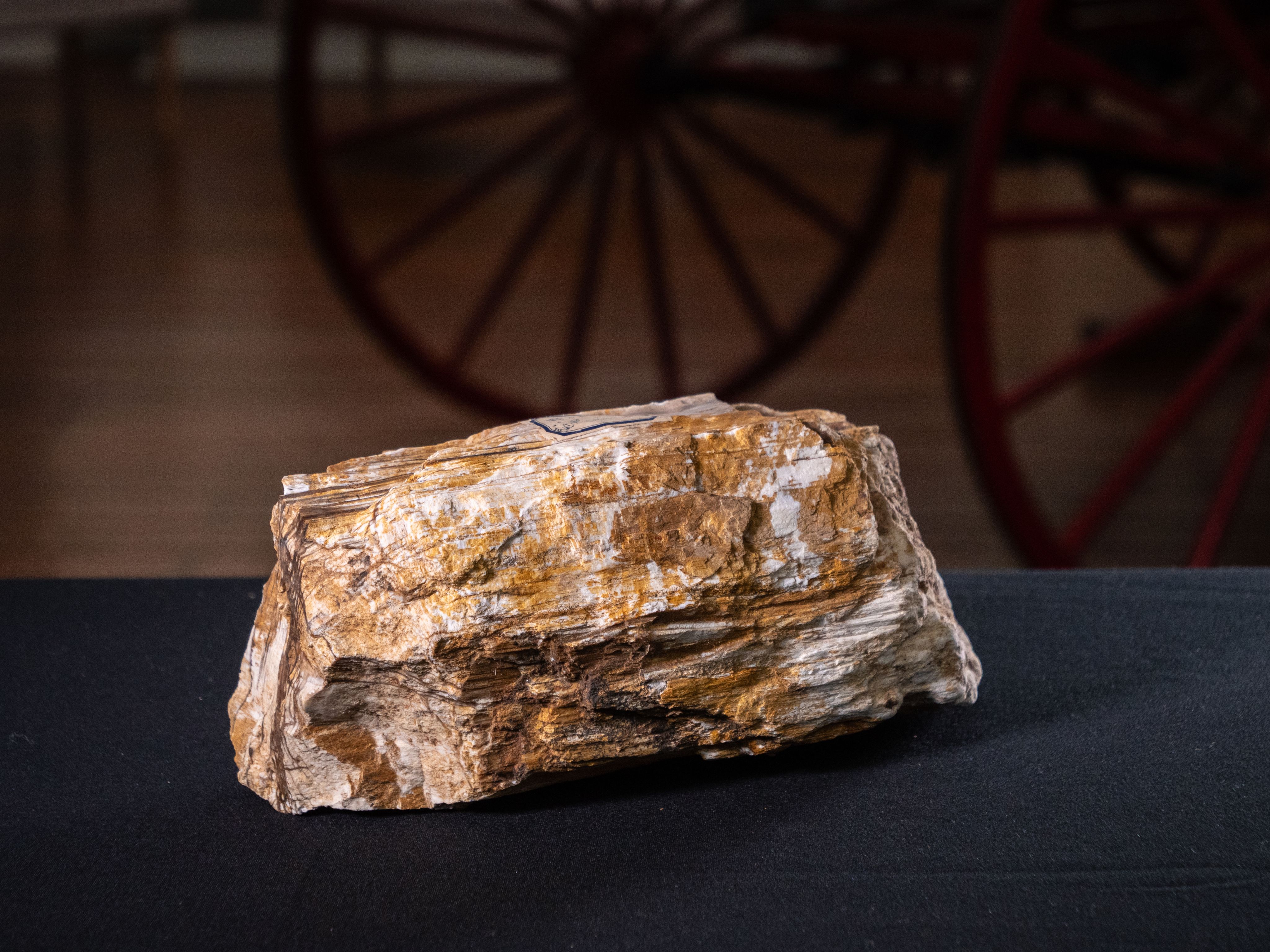
Ornithologist Professor Paul McDonald identified a taxidermied collection of birds assembled in a colourful display under a glass cloche.
Senior Technical Officer Andrew Wallace researched the (often alarming) contents of old medicines.
Dr Piers Kelly, a linguistic archaeologist and curator of the world's first online database of Indigenous message sticks, catalogued an Aboriginal message stick for the museum. He also provided background information on memorabilia from the Royal Antediluvian Order of Buffaloes.
Geologist Dr Luke Milan identified several rocks and minerals, including this petrified wood.
These artefacts had been hidden away for decades in storage boxes.
UNE researchers gave them a name and a story.
Still missing, perhaps never to be recovered, are the stories of how many of these objects came to rest in a small regional Australian city.
Professor Moore, an international expert in stone tools and creator of the Museum of Stone Tools, says that discovering the Neolithic stone dagger in the Folk Museum was "an absolute, complete shock to me".
This form of Danish dagger was considered the "apogee of flint knapping skill in Europe". Tapped out of stone 4000 years ago, it was made as the 3.4 million years of the Stone Age was ending, ushered out by the emergence of the Bronze Age.
More than just functional, the dagger was made with beauty in mind. "It took incredibly skilled workmanship just to chip this shape out of a chunk of flint," Professor Moore says, "but it also has this thing that we call stitching down either face of the handle. To be able to make that stitching is an incredibly technical skill, and it's unique to the handles of Danish daggers from a period that lasted about 150 years – when this dagger was made."
(An in-depth analysis of the dagger can be found on its page in the Museum of Stone Tools.)
The Danish dagger was not the only unexpected artefact that Professor Moore was handed in the Folk Museum.
He also identified a small hafted stone axe collected near Hungerford, Queensland, on the traditional lands of the Budjiti people. It was probably made in the late 19th–early 20th Century. Further information about the axe can be found here.
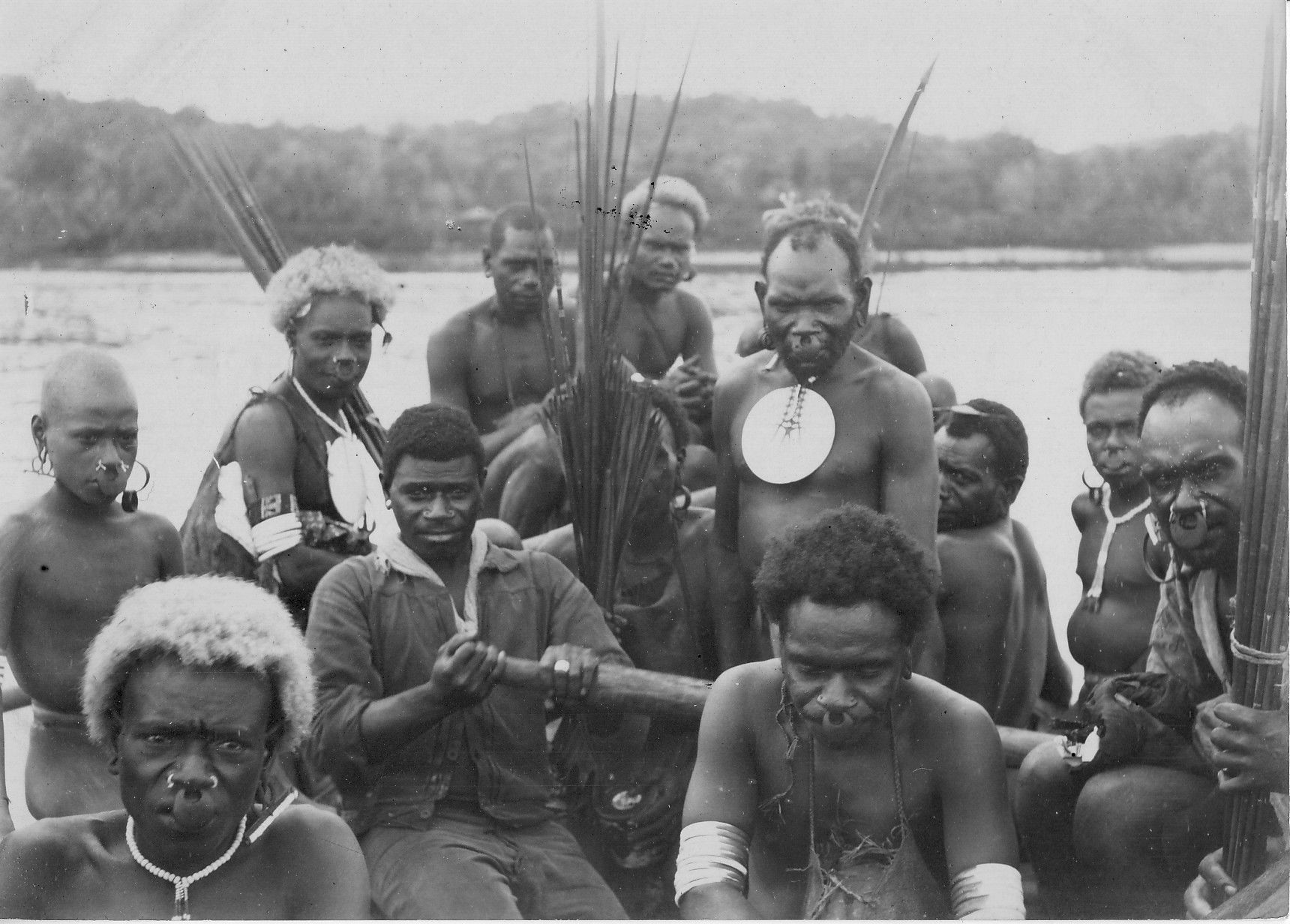
"Santa Cruzians going ashore by ship's boat". Photo by J.W. Beattie, 1906. View on Flickr. Copyright: University of Queensland Solomon Islands Partnership.
"Santa Cruzians going ashore by ship's boat". Photo by J.W. Beattie, 1906. View on Flickr. Copyright: University of Queensland Solomon Islands Partnership.
For archaeologist Professor Martin Gibbs, being introduced to the Folk Museum's remarkable collection of Pacific Island artefacts had a personal element.
Professor Gibbs spent about a decade doing fieldwork in the Solomon Islands. He quickly recognised the origins of the material being unpacked before him, and its age. "I lived in some of the exact locations where some of these objects were made, like Graciosa Bay on the very remote island of Santa Cruz," he says.
"The whole collection of Pacific objects at the museum would appear to represent a collecting trip by one person, probably on the mission ship called the Southern Cross, doing a tour of the islands."
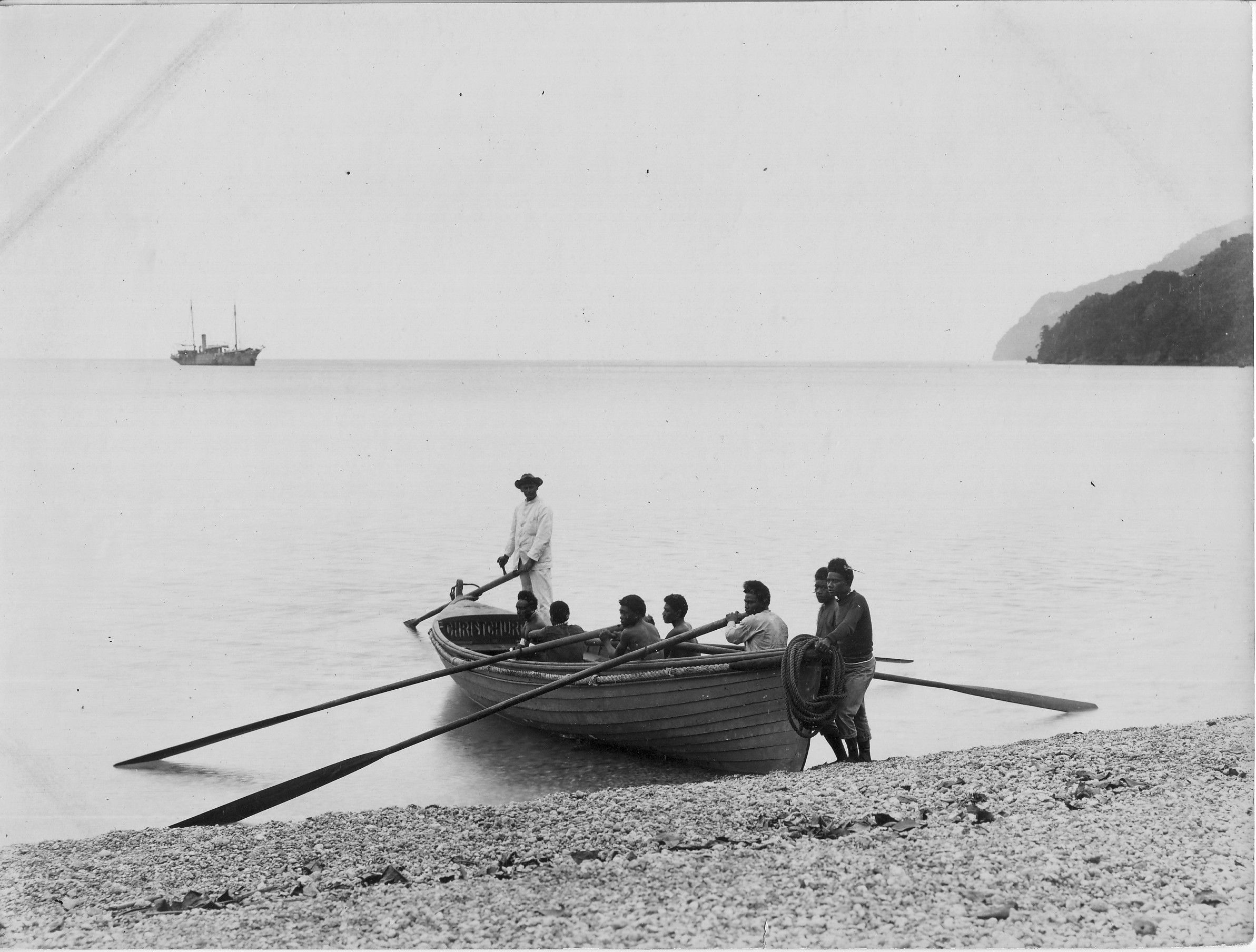
"The Bishop and his Boat's Crew" with the Southern Cross at anchor in the background. Photo by J.W. Beattie, 1906. View on Flickr. Copyright: University of Queensland Solomon Islands Partnership.
"The Bishop and his Boat's Crew" with the Southern Cross at anchor in the background. Photo by J.W. Beattie, 1906. View on Flickr. Copyright: University of Queensland Solomon Islands Partnership.
"There have been four or five Southern Crosses, but this photographer was probably on the most famous of them, which was a schooner operating around the end of the 19th Century. It was based in New Zealand, and would sail up into the Pacific, taking missionary boys that had been trained up out onto the islands."
To Professor Gibbs, one of the appeals of the collection is its ordinariness. Objects like the shield were not made for ceremonial occasions, or for tourists: they were part of the islanders' everyday life, and as such are an authentic window in to the lives and craft of Pacific peoples more than a century ago.
Poignantly, civil war and poor infrastructure mean that much of this sort of material has been lost from the islands themselves.

Dr Heidi Kolkert with sawfish rostrums in the Armidale Folk Museum.
Dr Heidi Kolkert with sawfish rostrums in the Armidale Folk Museum.
It was also poignant for Dr Heidi Kolkert, an ecologist focused on threatened species management, to find two reminders of human's devastating effects on biodiversity carefully preserved in the Folk Museum.
The two sawfish rostrums held by the museum appear to have been harvested in the early 1900s; one is dated 1936. Sawfish are a form of ray, and grow to immense sizes – some species reach more than seven metres in length. Their fearsome snouts are a formidable weapon that they use to defend themselves, and to stab their fish prey.
Since the early 1900s, when sawfish rostrums were popular wall decorations, "these animals were hunted almost to extinction," Dr Kolkert says.
In an age of nylon fishing nets, lines and other plastic pollution, their distinctive weaponry has also become the sawfish's greatest liability. Their spiked rostrums get entangled in drifting nets and other waste, preventing the animals from swimming and feeding.
All of the world's five sawfish species are now considered critically endangered.
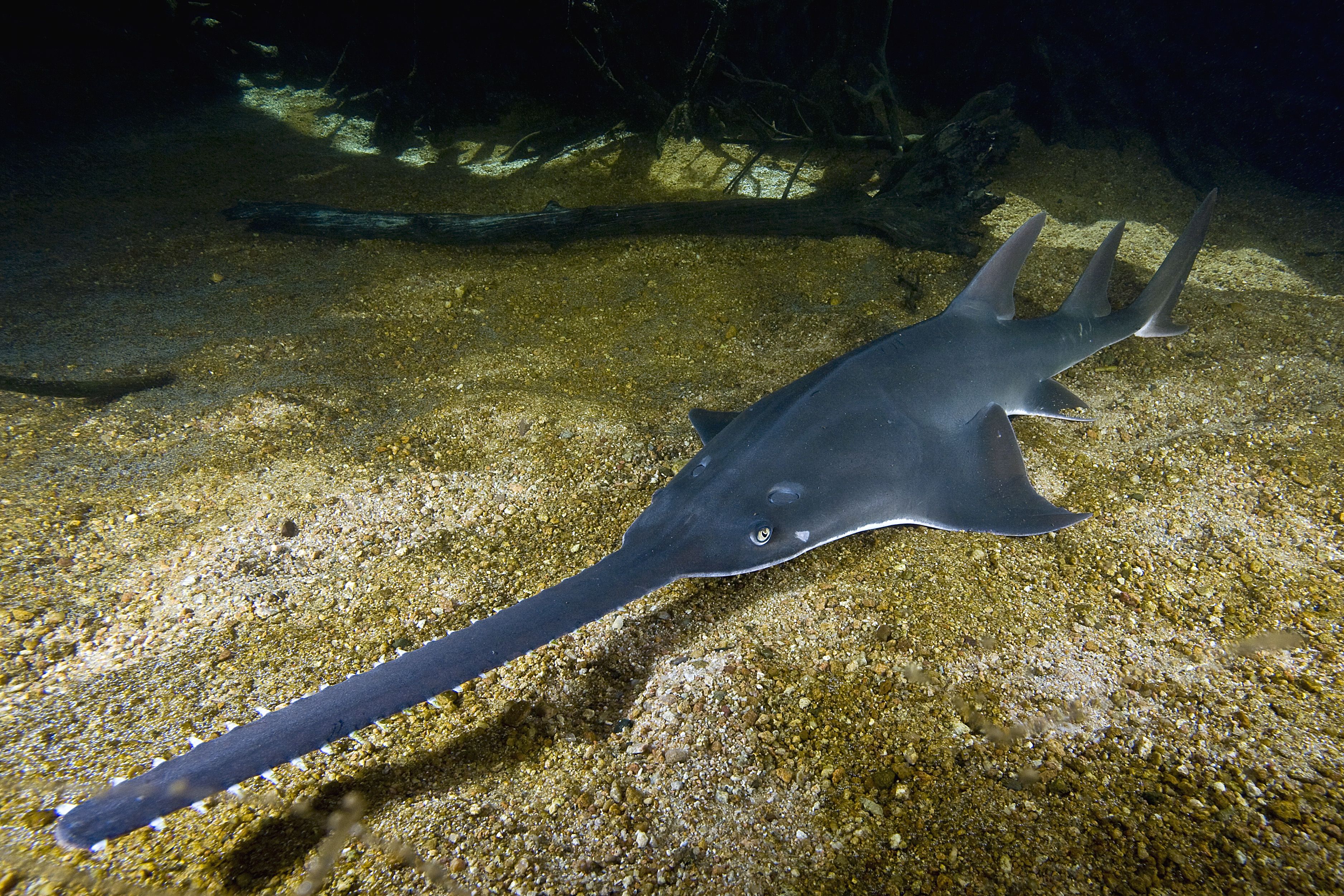
A largetooth sawfish in Northern Australia, which is the only remaining stronghold for four of the five species. By Simon Fraser University - University Communications - Sawfish, CC BY 2.0, Wikipedia
A largetooth sawfish in Northern Australia, which is the only remaining stronghold for four of the five species. By Simon Fraser University - University Communications - Sawfish, CC BY 2.0, Wikipedia
"After analysing the snouts, we established that they come from two different species," says Dr Kolkert. "One is from the freshwater large-toothed sawfish, and the other from a green sawfish. Just to be sure, we're sending samples of the rostrums to Sharks and Rays Australia for DNA testing. They might be able to tell us more about where they came from and how old they are."
Dr Kolkert is now talking with the Folk Museum about moving the rostrums to a more appropriate home a few kilometres away: UNE's Natural History Museum. Dr Kolkert is curator of the NHM, and can foresee the two rostrums being the focus of many stories about species diversity and decline.
Now what?
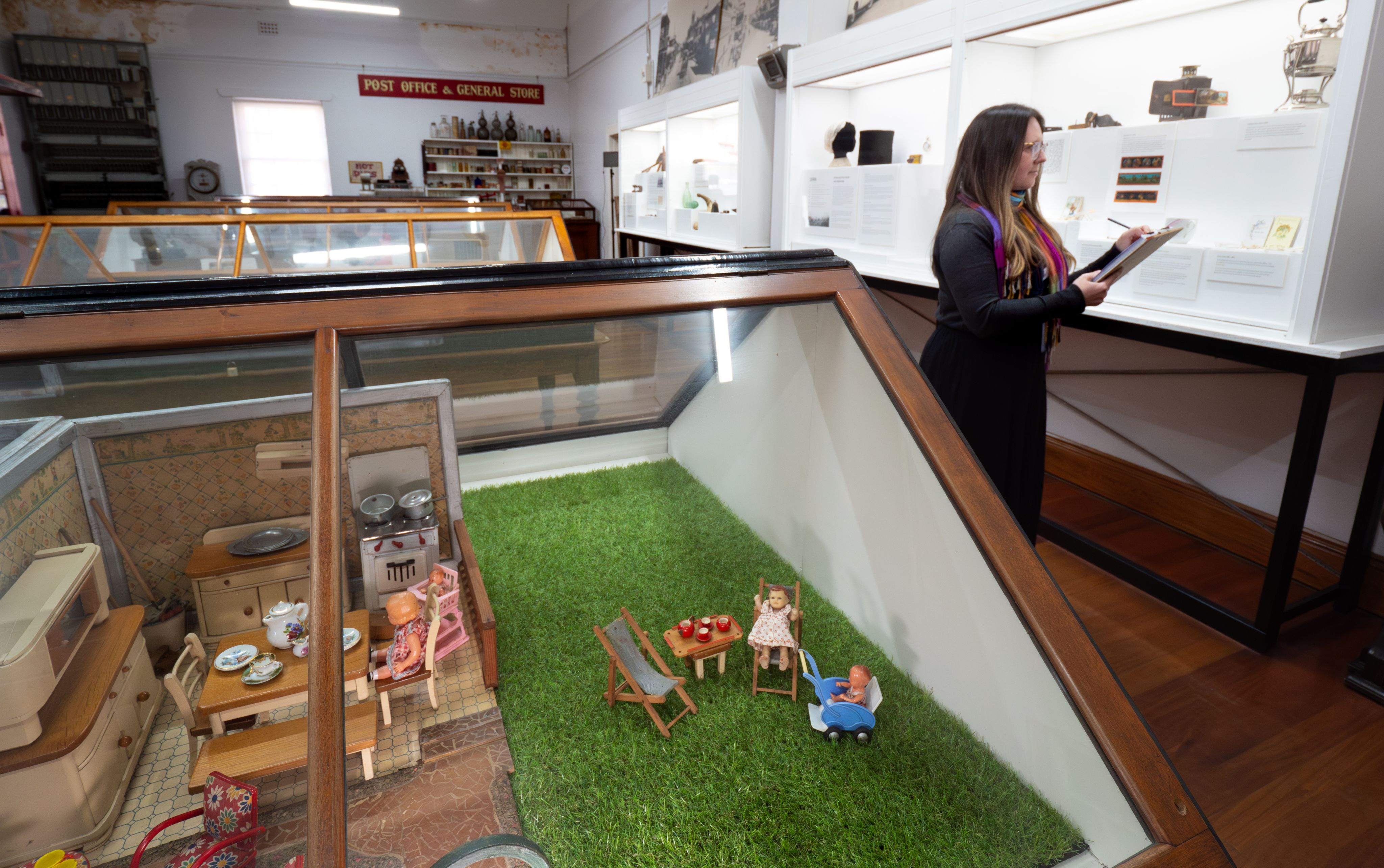
For a small regional museum, unearthing such rarities carries mixed blessings.
It is a testament to Armidale Regional Council, and generations of museum staff and volunteers, that these artefacts have been conserved for so long on behalf of the donor and the local community. On the other hand, knowing the artefacts' significance and value raises questions and obligations that can stretch a thinly-staffed facility.
Sarah Reddington says enquiries will be made toward returning certain items, like the Pacific collection and the hafted stone axe, to their origins.
"As a folk museum, we are here to tell the stories of the people of the region through objects," she says. "There is a local story in how these objects were collected and came to the museum, but the objects themselves might be needed more in their homeland, where they can tell the stories of those people."
"These stories are related and interconnected, but they are different stories."
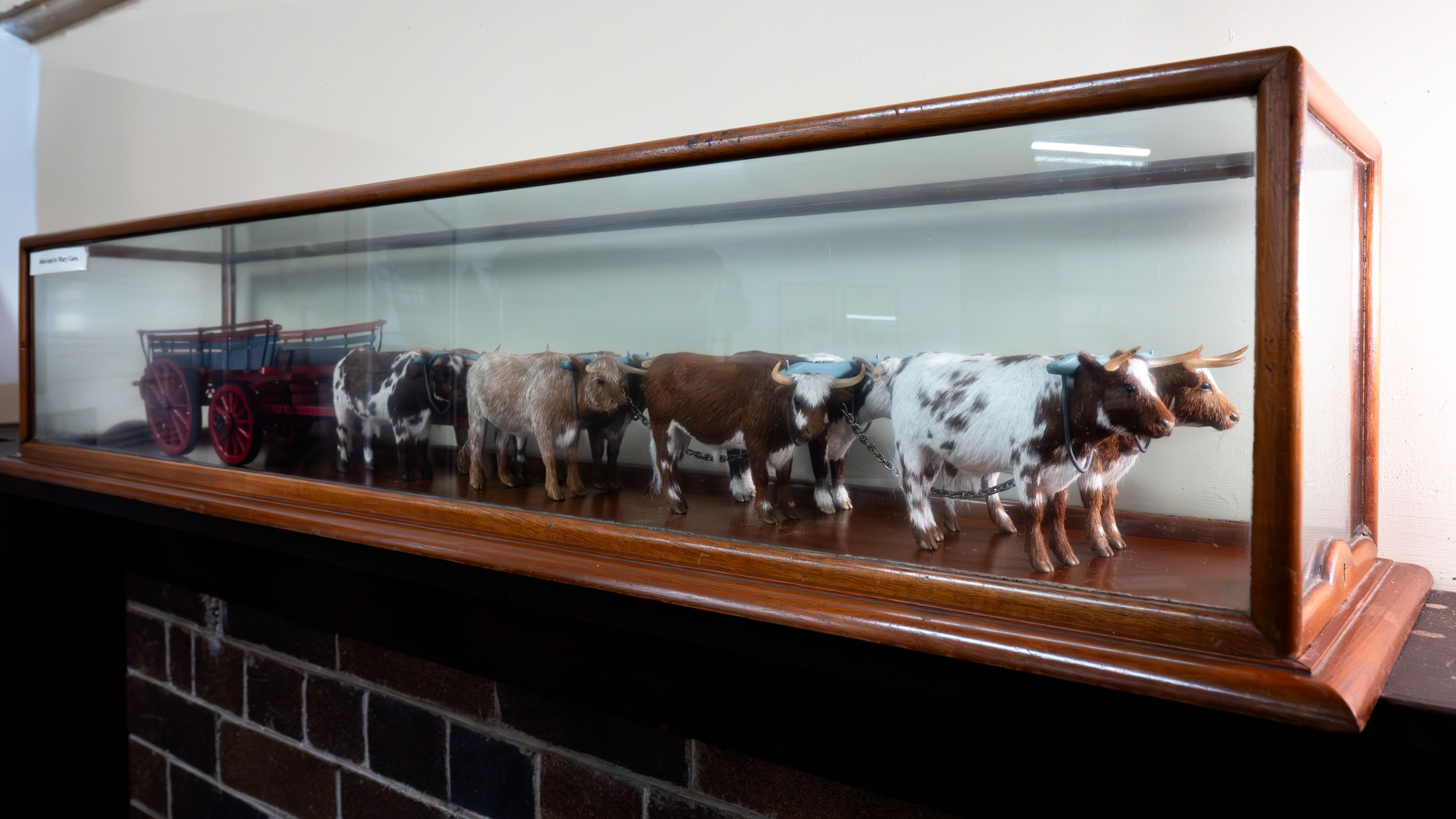
Handmade farm models
Handmade farm models
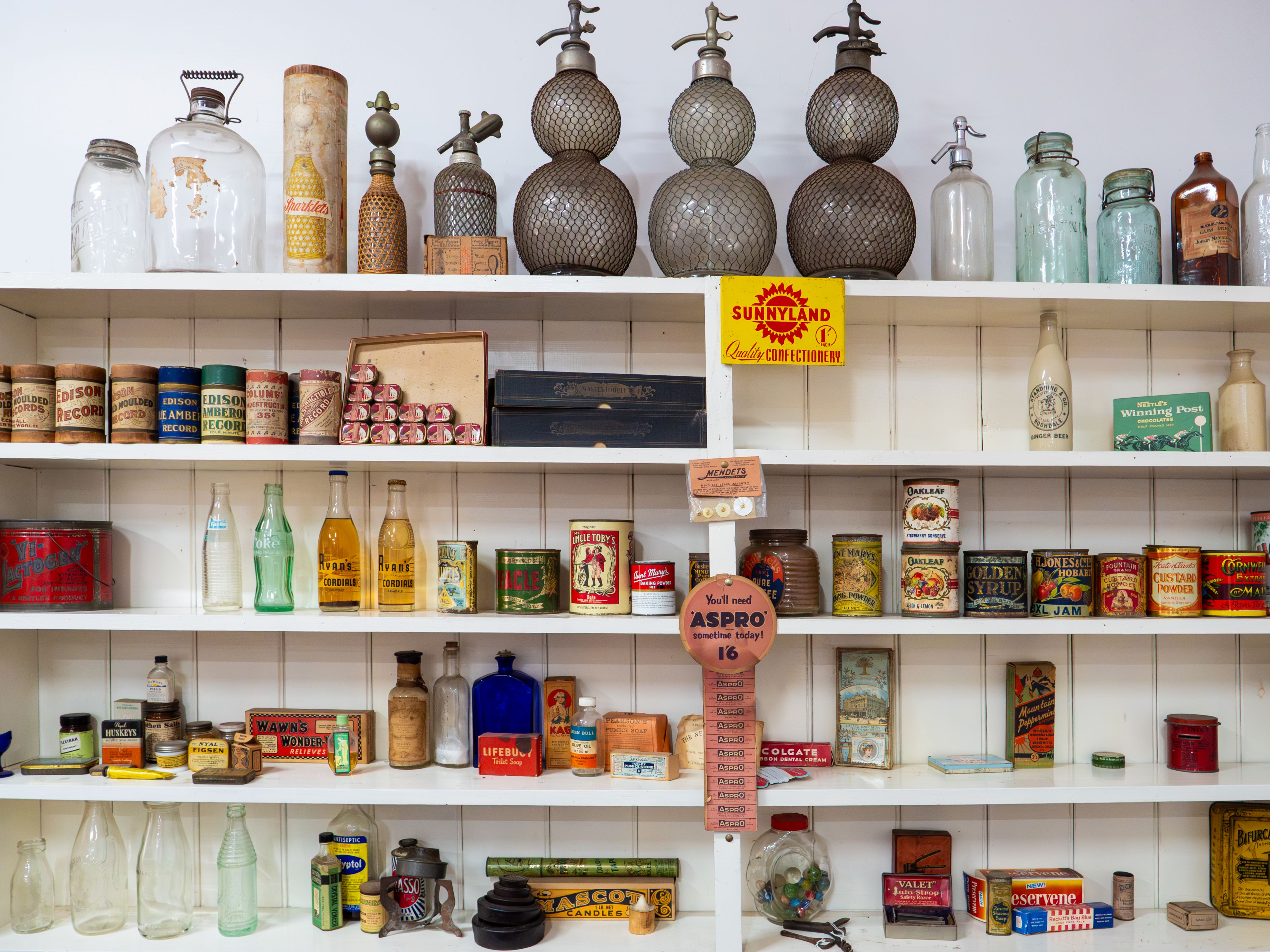
General store display
General store display
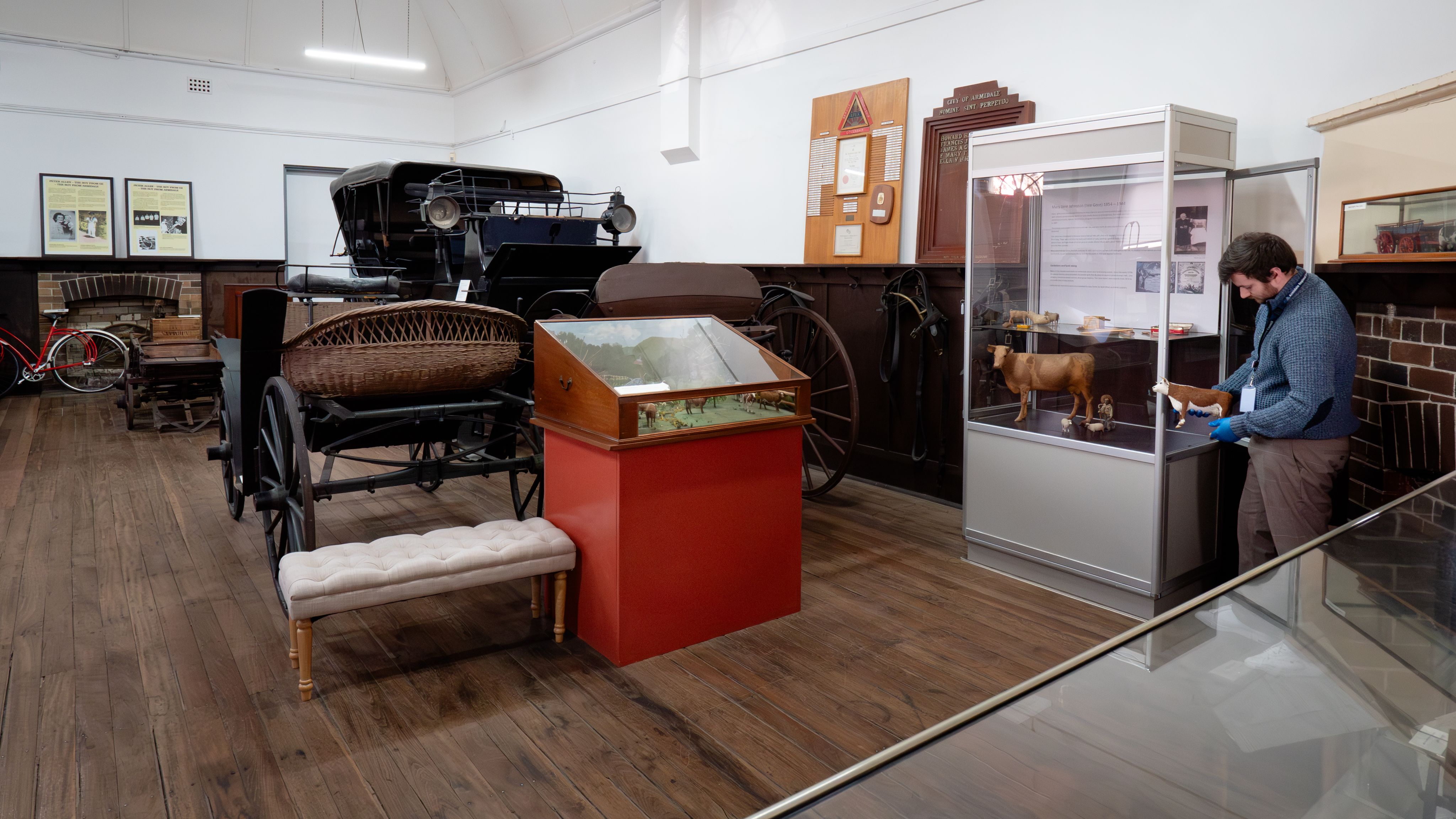
Vintage transport (powered by renewable energy!)
Vintage transport (powered by renewable energy!)
Want to become an expert?

Study with Mark Moore.
Professor Moore is an ARC Future Fellow in the UNE Department of Archaeology and Palaeoanthropology. Founder and curator of the Museum of Stone Tools, his work investigating the role of stone tool manufacture in human development has taken him around the world. An expert flintknapper, he also teaches knapping techniques that span millions of years of stone tool making. Prof. Moore collaborates with Aboriginal communities to rediscover and reclaim their stone-working practices on traditional country.
Study with Professor Moore:
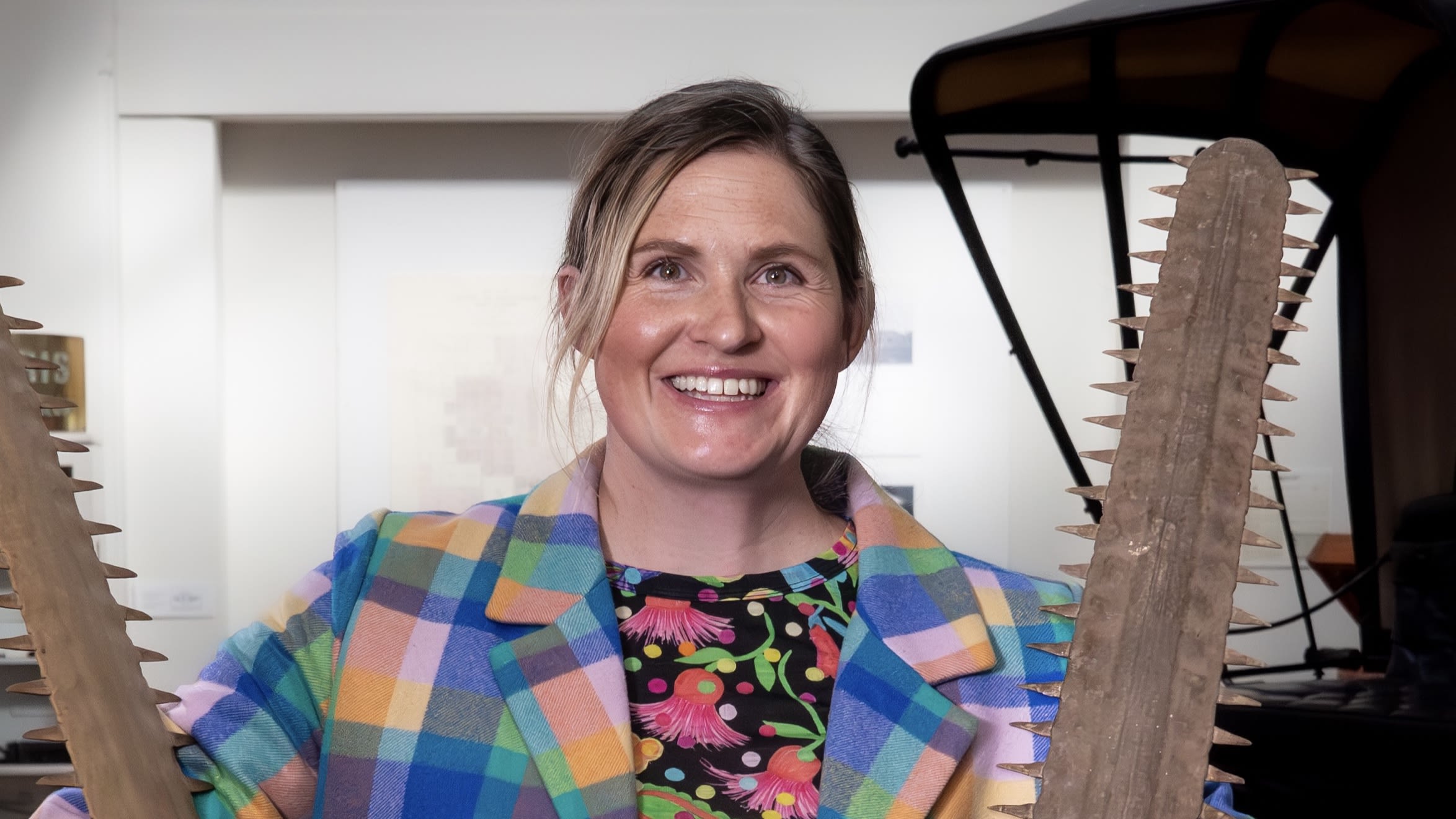
Study with Heidi Kolkert.
Dr Kolkert is a fauna ecologist specialising in threatened species management. Her research has focused on insectivorous bats in agri-ecosystems, but she also examines other wildlife interactions in agri-ecosystems and the impacts of environmental disturbance (roads, renewable energy) and land-use change on wildlife communities, species interactions, and natural history.
Dr Kolkert is also Collections Manager for UNE's Natural History Museum.
Study with Dr Kolkert:
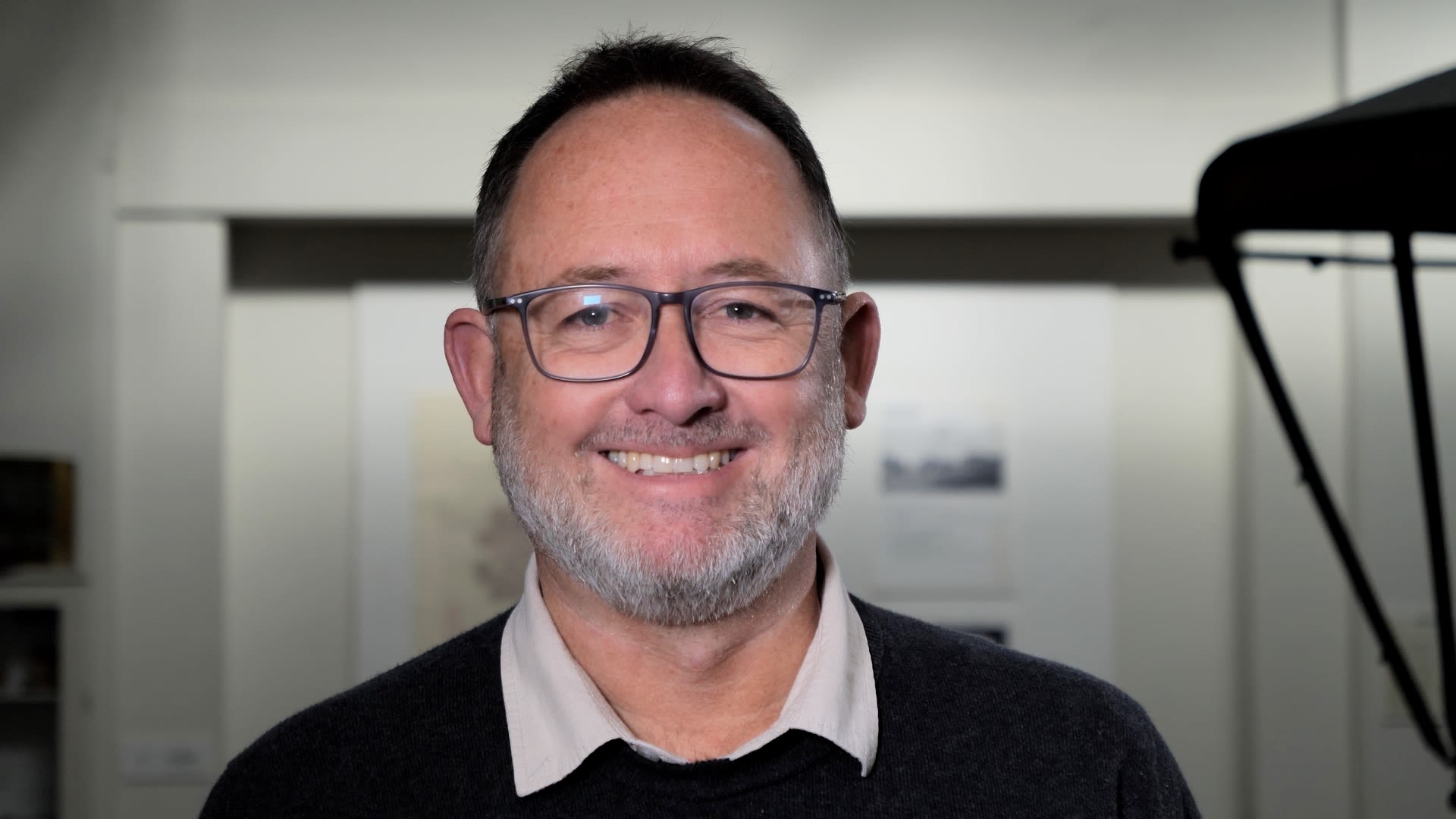
Study with Martin Gibbs.
Martin Gibbs is UNE's Professor of Australian Archaeology. His speciality is Australasian-Pacific historical and maritime archaeologies, which has most recently taken him on an exploration of the industrial aspects of the convict system as it operated in the Australian colonies. Prof. Gibbs and his collaborators are taking convict history out of the archives and digitising it in ways that make the convict experience more accessible to all.
Study with Professor Gibbs:
Want more history?
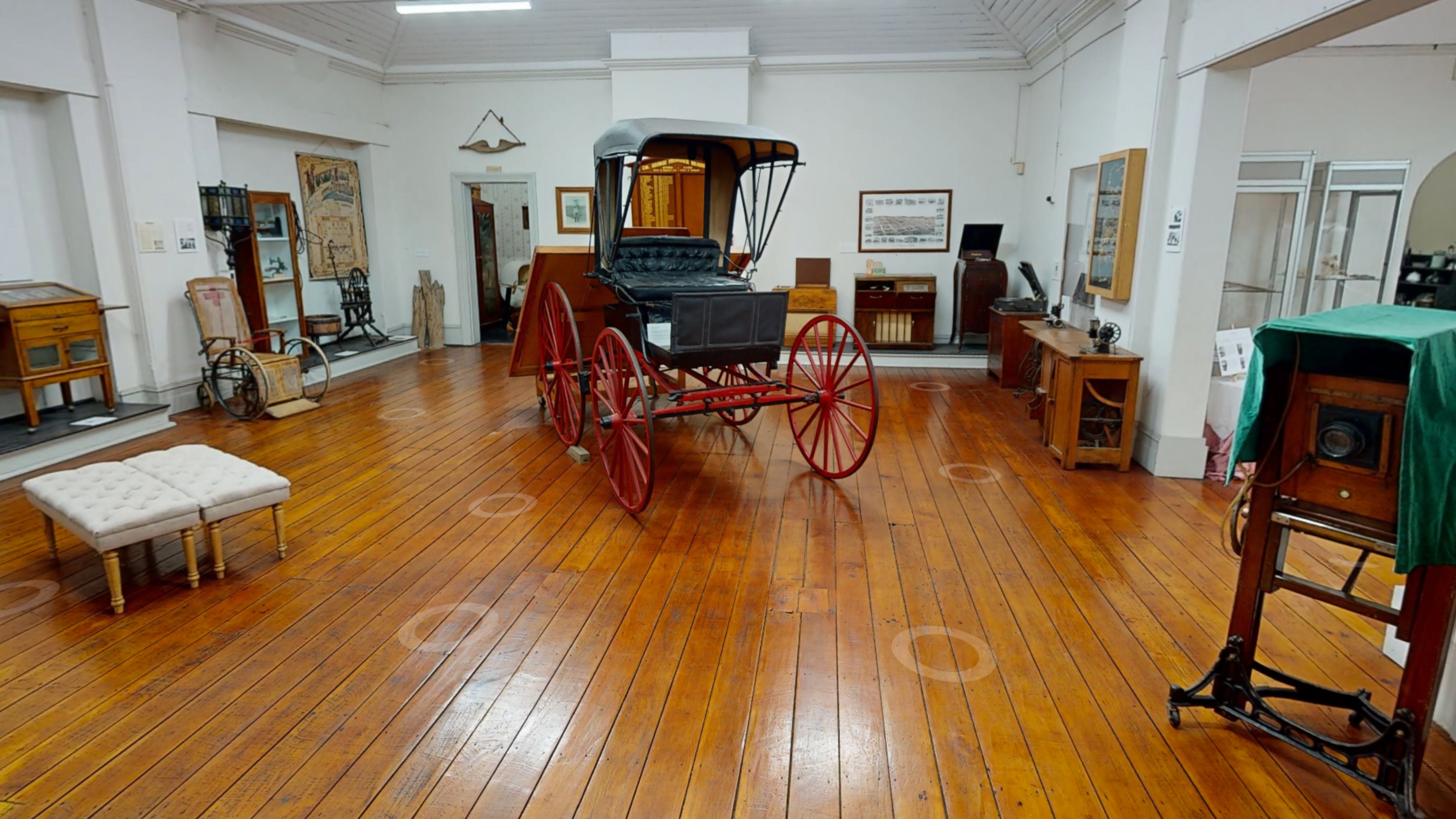
Armidale Folk Museum
Visit the museum in person: 124 Faulkner Street, Armidale. Open Wednesday-Monday 11am-2pm.
If you can't visit in person, take a virtual tour
Like to help uncover more stories? Become a museum volunteer - email museums@armidale.nsw.gov.au or phone 02 6770 3836.
